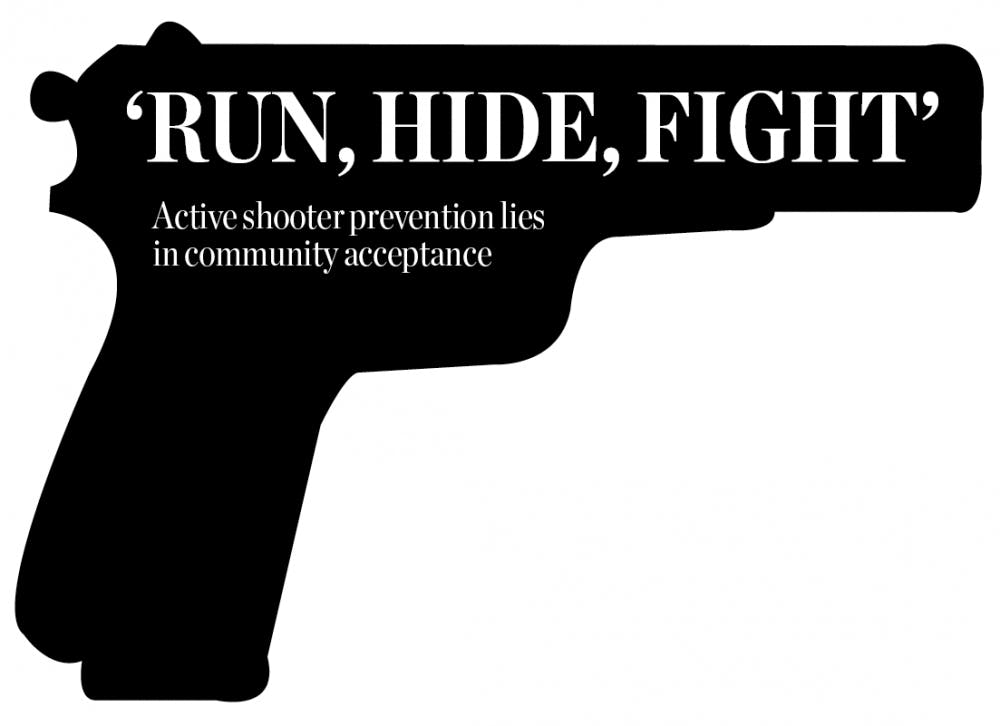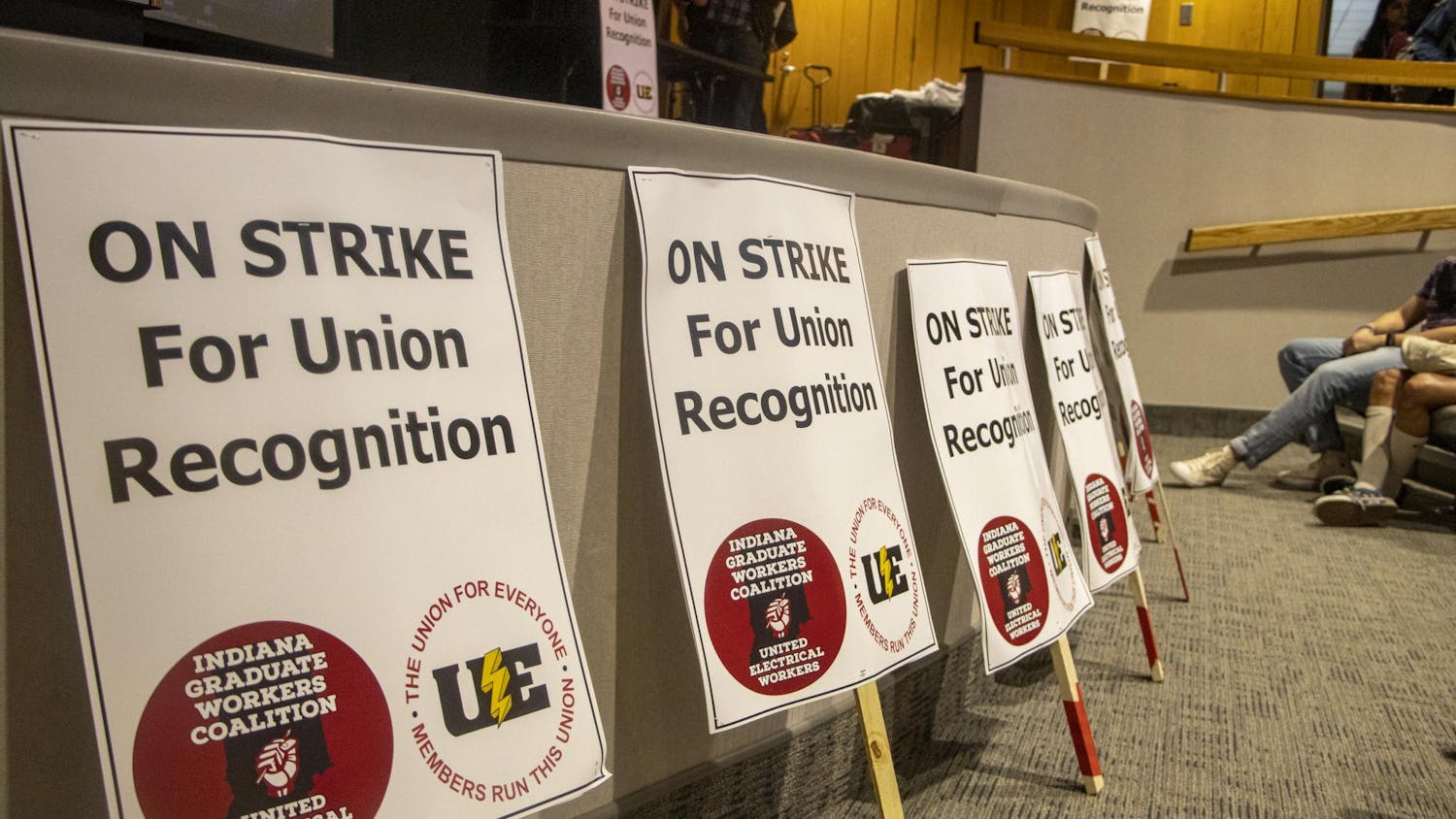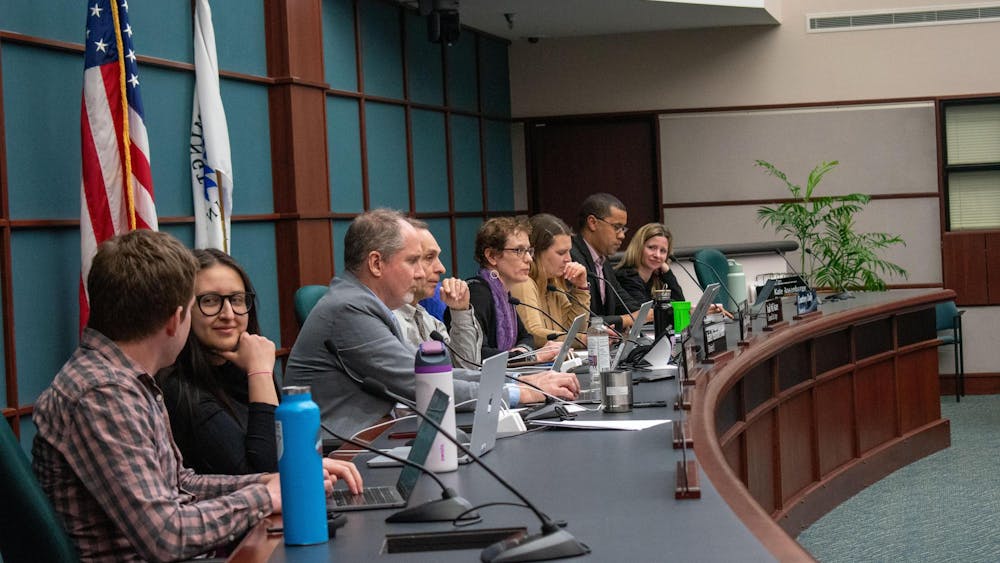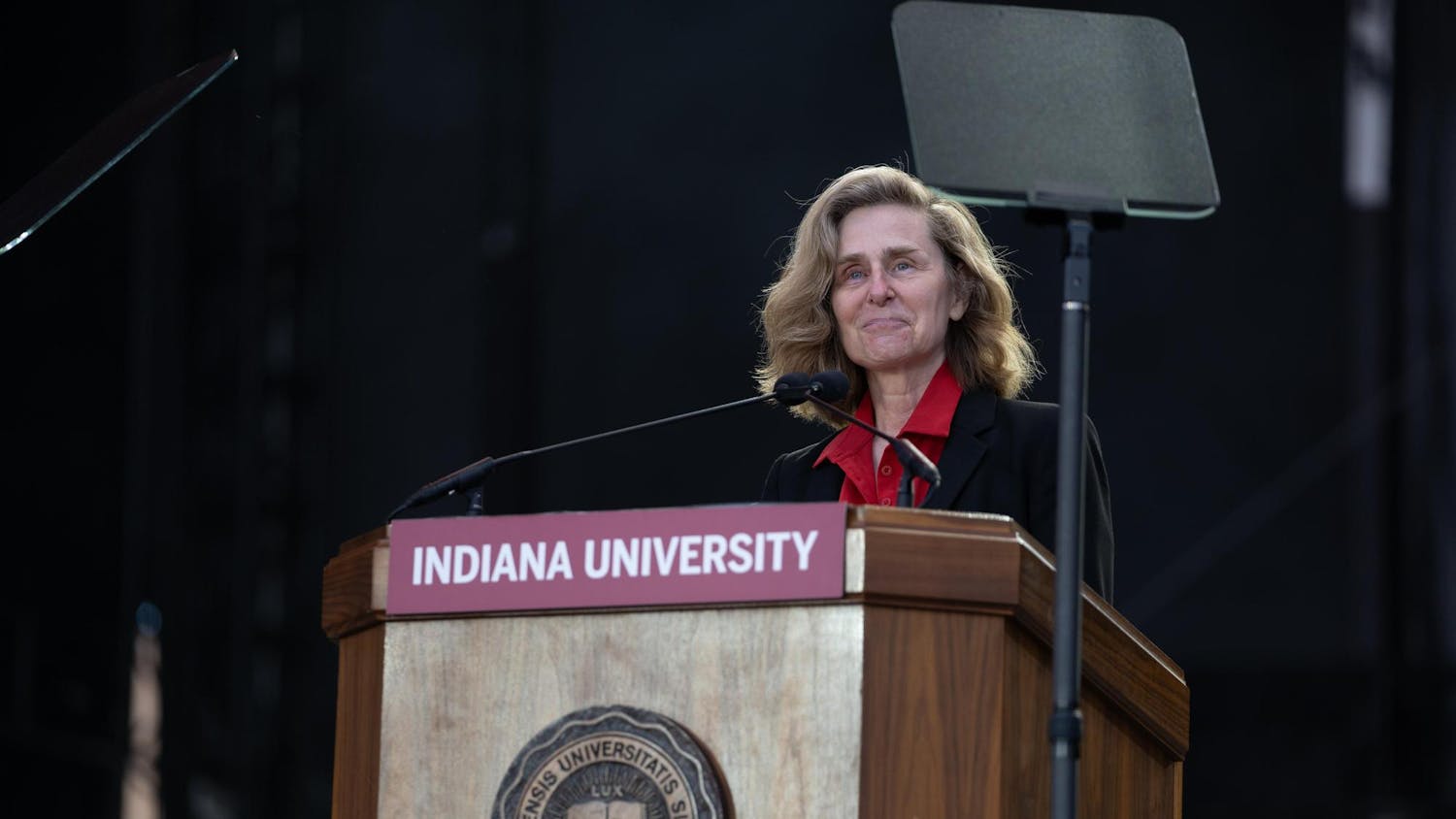Following the recent mass shooting at Umpqua Community College in Roseburg, Oregon, earlier this month, IU Emergency Management and Continuity is placing an emphasis on three words: run, hide and fight.
Through materials posted on the Protect IU website and meetings with student groups, IUEMC said it hopes to encourage students to be aware of surroundings and be ready in the event that an active-shooter situation occurs, IUEMC Bloomington Director Debbi Fletcher said.
“I suggest that people — wherever you’re going or whatever you’re doing — that you take any opportunity you have to think out your options,” Fletcher said, explaining a run, hide, fight situation. “Wherever you are, you’re going to have to think about what it’s going to take me to get out of there, or where am I going to have to go if I have to hide, or what am I going to throw at this person if I have to fight.”
In recent years, IU has conducted full-scale active-shooter drills on all eight of its campuses. In doing this IU has exercised the joint response skills of local police, fire departments and emergency medical services at each campus. Smaller departmental drills are also conducted on each campus annually.
IU-Bloomington’s most recent exercise occurred last November during Thanksgiving break.
During the drill, various law enforcement teams practiced tactical response, while an emergency preparedness committee and executive policy group discussed further University actions, such as cancelling classes or planning a memorial.
The exercises can be as detailed as applying makeup to create mock victims of a potential active shooter.
“When we do a full-scale exercise we try to exercise as many of the functions that we would use in a situation like that that we can because it gives us the opportunity to find the gaps that we might have in our training or in our planning,” Fletcher said.
While students are not typically involved in all-campus scenarios simulating an active-shooter event, Fletcher said student drills are something IUEMC has been looking into for future practice on a building or classroom level.
“The reason we did it when students weren’t here was because that can be very traumatizing to people,” Fletcher said. “We try to keep it fairly low-key. The things we were exercising were the first responders.”
Fletcher said simply having the background educational knowledge of how to respond in an active shooter situation can put students at an advantage. She also said physical safety measures on campus, like locks on all classroom doors in Ballantine Hall and identification swipes required to enter all residence halls, provide an extra layer of safety.
IUEMC is available for free small group training drills for students upon request.
“We’re willing to do whatever it takes to make sure that they’re comfortable with the information that they have,” Fletcher said. “We can’t stop it from happening, but we can sure give them the tools they need to be able to make it and to make themselves feel better.”
Bernice Pescosolido, a distinguished professor of sociology and director of the Indiana Consortium for Mental Health Services Research, said she believes in a different kind of preventative effort in relation to rampage shootings.
In a TEDxBloomington talk last year, Pescosolido presented a safety net theory, suggesting a community of acceptance best prevents rampage shootings from occurring.
In her research, Pescosolido has found those found guilty of mass shootings share commonalities, with most shooters being white men left with a feeling that they do not belong.
“We have people who leave school,” Pescosolido said. “We have people who commit suicide. We have mass shootings. All of those things stem from this feeling of not mattering in the world.”
She said mass shootings typically happen in small communities, rather than in large cities, where many people can easily find their niche.
“People always talk about the disadvantages of large college campuses,” Pescosolido said. “But what they fail to recognize is a big college campus like ours gives people many ways to participate and many ways to be included.”
While Pescosolido said she feels physical preventative safety efforts are important, she said engaging in prevention that presents a culture of safety and acceptance is a better way to prevent mass shootings.
“A safety net really is a safety net of people,” Pescosolido said. “It’s not some technology. It really is people. People create the climate of a place.”
Although Pescosolido said violence among the mentally ill is very low, she said student groups like U Bring Change 2 Mind allow fellow students the opportunity to talk to peers about various stress factors and eliminate the stigma often attached to mental health problems.
“We want to be an organization that’s a contact point for people who need to get their story out or want to talk about their feelings,” U Bring Change 2 Mind co-director David Haggerty said. “Putting people in contact that want to talk to each other about issues that they’re not normally comfortable talking about actually does create a lot of change.”
In addition to U Bring Change 2 Mind, Pescosolido said IU programs like Counseling and Psychological Services, Culture of Care, the IU Health Center and Crimson CORPS all provide similar resources..
“To go to CAPS is a large step,” Haggerty said. “We’re trying to be that organization that’s a network to help people that might know someone that’s developing something that they don’t think is a big enough problem yet, to teach them what’s going on, prepare them to have those conversations and productive outcomes and to educate them about resources so, if it does get to that point where they need to go see someone, they know where to go.”






